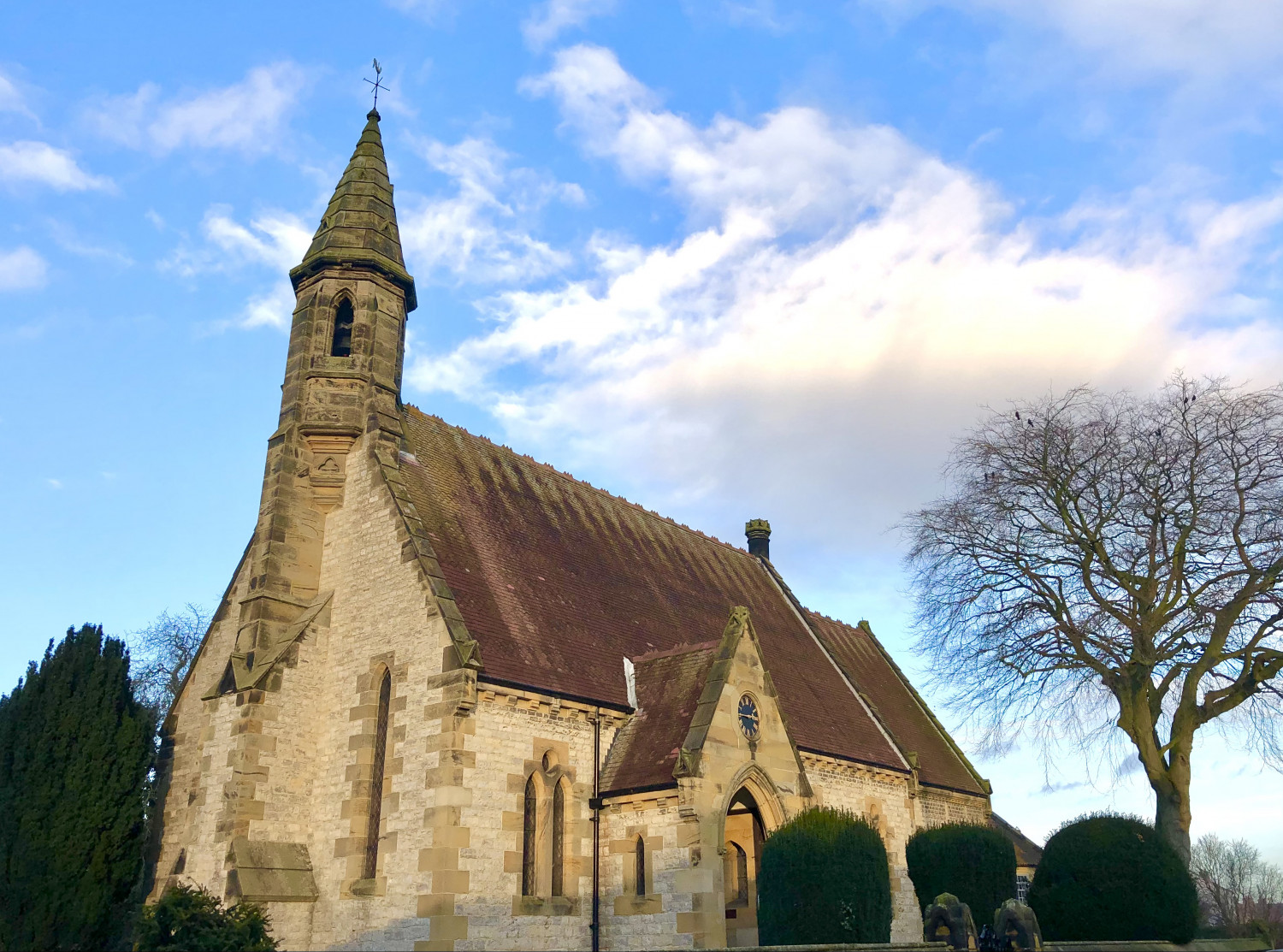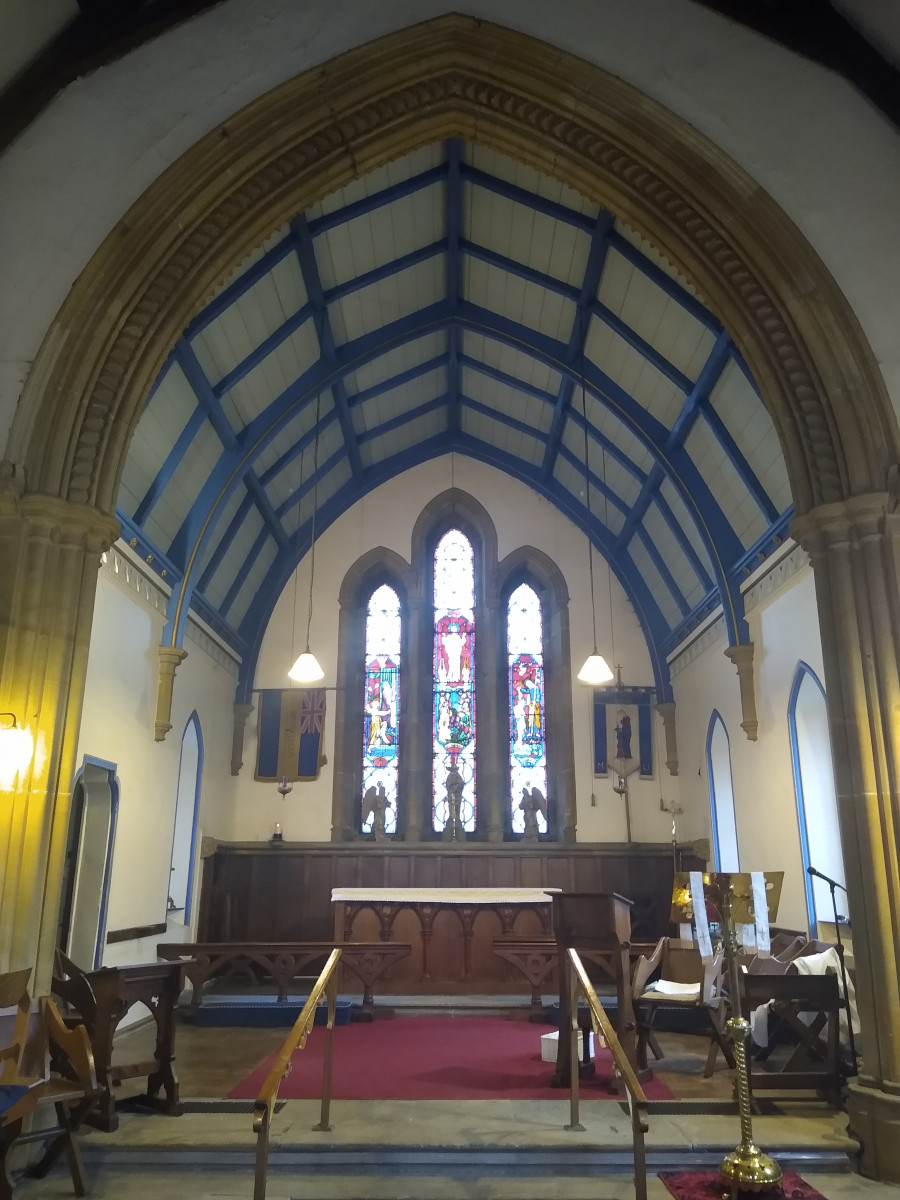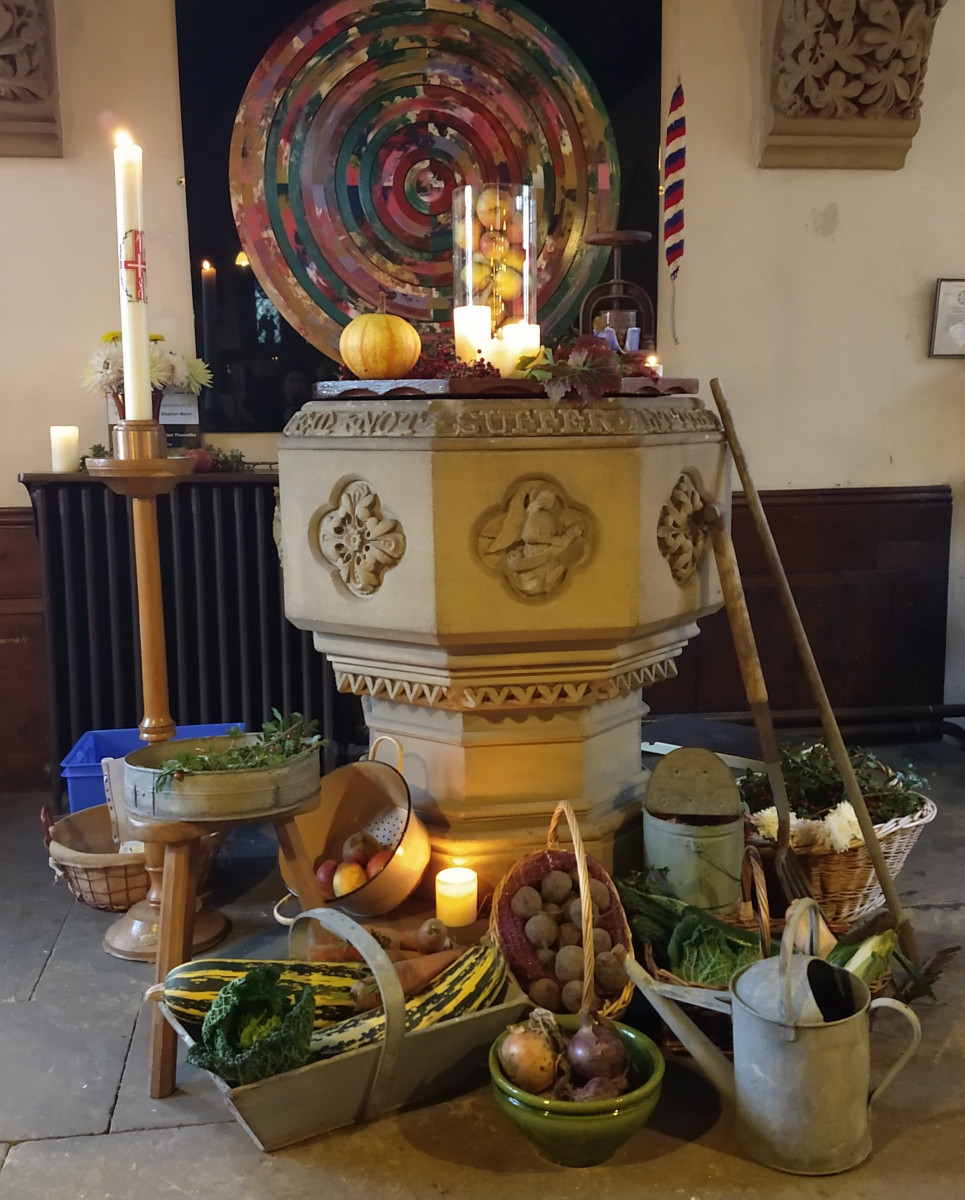 |
St Saviour’s was designed by Charles Barry Junior, whose father was the architect for the Houses of Parliament. According to the local historian Thomas Parker (writing in 1860) the church replaced a Norman chapel of ease, consisting of a nave and chancel and he states, “though the oak stalls were destroyed 30 years ago, there is still to be seen a splendid carved font and an oaked cabinet used in former times to hold the vestments of the Catholic priests, who officiated here before the times of Queen Elizabeth. The churchyard is very small and without any gravestones. The Church is served by the Incumbent of Helmsley”. The new church’s foundation stone was laid by William, Lord Feversham on 6th May 1861.The Church was consecrated in August 1862 by the Archbishop of York, who according to Parker ‘preached the sermon to a crowded audience. Parker describes St Saviour’s as ‘ this magnificent structure with its tall gables, high slanting roof covered with Staffordshire tiles, ornamental courses, elaborate crosses and lofty gothic spire, on top a gilt cross and a vane ( an emblem of watchfulness)’. |
 |
The church is 73 feet long, 23 feet wide with accommodation for about 200 people. Lord Feversham also installed a clock, a harmonium organ, altar, pulpit and reading desk. The East Window is by Hardman of Birmingham. The centre light represents the Ascension, the right hand the Baptism of Christ and the left hand the Annunciation. |
 |
The first baptism to be held in the church was that of Mary Ellen, daughter of William and Harriet Ford (11th December 1865).The first funeral and burial was that of Ann Bradley, aged only 10 weeks (31st December 1863) and the first marriage (2nd December 1863) was between George Slater and Ruth Stephenson. All three services were taken by Revd. Thomas Beamish, the first Incumbent. |
Header Text
Footer Text